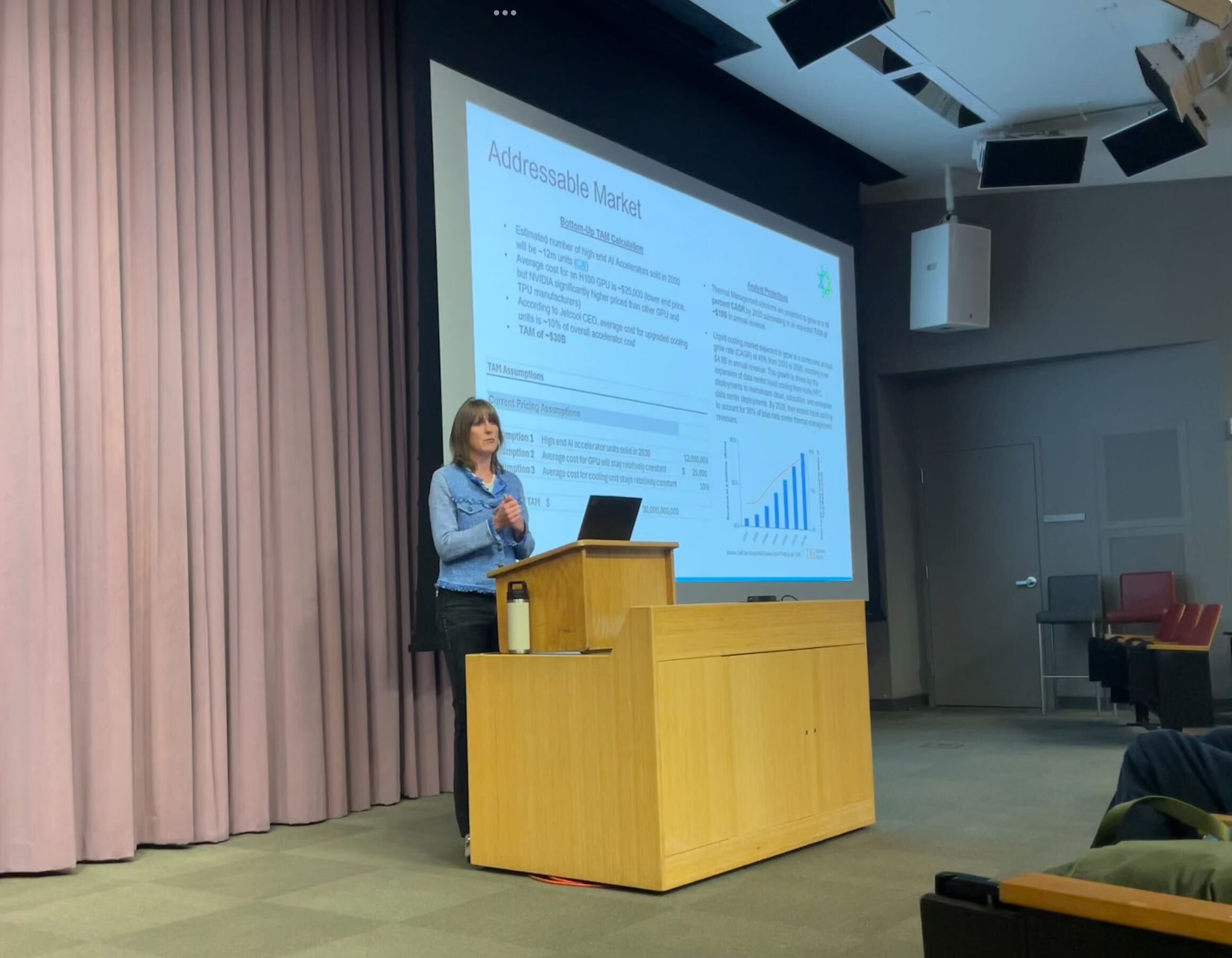Could Poor Countries Hold the U.S. Accountable for Climate Chaos? – In These Times

International Legal Rulings Reinforce State Obligations for Climate Action
Landmark Decisions and Alignment with SDG 13
A series of recent rulings from prominent international judicial bodies has established a clear legal obligation for states to address climate change, directly reinforcing the objectives of Sustainable Development Goal 13 (Climate Action). These decisions collectively mandate a transition away from fossil fuels and a significant reduction in greenhouse gas emissions.
- The International Court of Justice (ICJ): Unanimously ruled that nations are obligated to prevent catastrophic climate change. The court specifically identified government subsidies for fossil fuels and the licensing of their expansion as actions that could create state liability for climate-related damages.
- The Inter-American Court of Human Rights (IACHR): Issued a ruling affirming the human right to a stable climate, linking environmental protection to fundamental human rights.
- The International Tribunal on the Law of the Sea (ITLOS): Determined that greenhouse gas emissions constitute marine pollution, obligating states to protect marine ecosystems, a key target of SDG 14 (Life Below Water).
These legal precedents strengthen the framework for global governance and accountability under SDG 16 (Peace, Justice and Strong Institutions) by providing a legal basis to hold nations accountable for their climate commitments.
United States Policy Divergence from Global Sustainability Commitments
Fossil Fuel Expansion and Contradiction with SDG 7 and SDG 12
Despite the growing international legal consensus, recent policy directions in the United States conflict with global efforts to achieve SDG 7 (Affordable and Clean Energy) and SDG 12 (Responsible Consumption and Production). Actions from both the current and previous administrations have promoted the fossil fuel industry.
- Acceleration of Fossil Fuel Projects: The declaration of a “national energy emergency” has been used to fast-track the permitting of fossil fuel infrastructure.
- Expansion of Subsidies: Legislative measures have increased already substantial government subsidies for the fossil fuel industry, directly contradicting targets within SDG 12 aimed at phasing out inefficient fossil-fuel subsidies.
- Regulatory Rollbacks: Proposals have been made to eliminate the legal authority for regulating greenhouse gases as pollutants, undermining the scientific basis for climate action.
- Continued Permitting and Drilling: The approval of new liquefied natural gas (LNG) export terminals and the acceleration of oil and gas drilling permits on public lands have continued under multiple administrations.
As the world’s largest producer of oil and gas and the nation with the highest cumulative greenhouse gas emissions, U.S. policies have a significant global impact, hindering progress towards the Paris Agreement and the broader 2030 Agenda for Sustainable Development.
Socio-Economic Disparities and International Accountability
Climate Impacts and SDG 10: Reduced Inequalities
The domestic and international consequences of these policies highlight critical challenges related to SDG 10 (Reduced Inequalities). Within the United States, the burden of fossil fuel pollution and climate-related disasters disproportionately affects marginalized communities.
- Environmental Injustice: Indigenous, Black, and low-income communities are often located in “sacrifice zones” with high concentrations of fossil fuel pollution and are more vulnerable to severe climate impacts.
- Global Responsibility: The international court rulings provide a new avenue for these communities, alongside nations most affected by climate change, to seek accountability and justice.
Geopolitical Tensions and SDG 17: Partnerships for the Goals
The U.S. administration’s unilateral actions, including the imposition of tariffs, have created international friction but also opened potential pathways for accountability, relevant to SDG 17 (Partnerships for the Goals). Retaliatory measures, such as those announced by Brazil, demonstrate a growing willingness among nations to counter policies that undermine global cooperation. This international pressure, combined with the legal weight of recent court rulings, creates a new dynamic for holding polluting nations and industries accountable, aligning the pursuit of climate justice with the foundational principles of the Sustainable Development Goals.
Analysis of SDGs, Targets, and Indicators
1. Which SDGs are addressed or connected to the issues highlighted in the article?
-
SDG 13: Climate Action
This is the central theme of the article. It directly discusses the “obligation to prevent catastrophic climate change,” the need to “cut greenhouse gas emissions,” and the transition from fossil fuels. The rulings by the International Court of Justice (ICJ) and other international bodies are all focused on holding countries accountable for their contributions to climate change.
-
SDG 7: Affordable and Clean Energy
The article’s strong focus on “transitioning from fossil fuels” and condemning the expansion of fossil fuel projects implicitly advocates for a shift towards clean and renewable energy sources. The critique of U.S. policies that “accelerate the permitting of fossil fuel projects” and provide “wasteful subsidies for carbon capture and storage” is directly related to the composition of the energy sector.
-
SDG 12: Responsible Consumption and Production
The article explicitly mentions and condemns governments that “subsidize fossil fuels.” It highlights the “already excessive U.S. subsidies offered to this polluting, profitable industry,” which directly connects to the goal of ensuring sustainable consumption and production patterns by addressing market distortions.
-
SDG 16: Peace, Justice and Strong Institutions
The article revolves around legal and institutional accountability. It highlights the rulings from the UN’s highest court, the International Court of Justice (ICJ), the Inter-American Court of Human Rights (IACHR), and the International Tribunal on the Law of the Sea (ITLOS). These rulings represent the use of international legal institutions to enforce climate obligations and promote the rule of law. The article also criticizes the U.S. administration’s actions as showing “contempt for science, reason and justice.”
-
SDG 10: Reduced Inequalities
The article points out the disproportionate impact of climate change and pollution on vulnerable populations. It states that “Indigenous, Black, and poor communities in the U.S. have been turned into sacrifice zones for fossil fuel pollution and often bear the brunt of more severe climate disasters as well,” highlighting the environmental justice dimension and the unequal burden of climate impacts.
-
SDG 14: Life Below Water
The article mentions a ruling by the International Tribunal on the Law of the Sea (ITLOS) which concluded that “greenhouse gases are pollutants that kill marine life.” This directly connects the issue of greenhouse gas emissions to the health and sustainability of marine ecosystems.
2. What specific targets under those SDGs can be identified based on the article’s content?
-
Under SDG 13 (Climate Action):
- Target 13.2: Integrate climate change measures into national policies, strategies and planning. The article discusses this target by highlighting how the U.S. government is heading in the “wrong direction” by accelerating fossil fuel projects and proposing to eliminate the legal authority to regulate greenhouse gases, which is the opposite of integrating climate measures. The international court rulings are pushing nations to adopt such measures.
-
Under SDG 7 (Affordable and Clean Energy):
- Target 7.2: By 2030, increase substantially the share of renewable energy in the global energy mix. The article’s call for a “transitioning from fossil fuels” is a direct prerequisite for achieving this target.
-
Under SDG 12 (Responsible Consumption and Production):
- Target 12.c: Rationalize inefficient fossil-fuel subsidies that encourage wasteful consumption. This target is explicitly addressed when the article condemns governments that “subsidize fossil fuels” and criticizes a U.S. budget bill that “expanded the already excessive U.S. subsidies offered to this polluting, profitable industry.”
-
Under SDG 10 (Reduced Inequalities):
- Target 10.3: Ensure equal opportunity and reduce inequalities of outcome, including by eliminating discriminatory laws, policies and practices. The article implies this target by describing how “Indigenous, Black, and poor communities” are disproportionately affected by fossil fuel pollution and climate disasters, indicating a significant inequality of outcome that current policies are failing to address.
-
Under SDG 16 (Peace, Justice and Strong Institutions):
- Target 16.3: Promote the rule of law at the national and international levels and ensure equal access to justice for all. The article showcases the application of this target through the actions of the ICJ, IACHR, and ITLOS, which are using international law to hold countries accountable for climate change. The final sentence emphasizes hope for communities to “finally hold polluters accountable.”
-
Under SDG 14 (Life Below Water):
- Target 14.1: By 2025, prevent and significantly reduce marine pollution of all kinds. The reference to the ITLOS ruling that “greenhouse gases are pollutants that kill marine life” directly links emissions to marine pollution, making this target relevant.
3. Are there any indicators mentioned or implied in the article that can be used to measure progress towards the identified targets?
- Greenhouse Gas Emissions: The article explicitly mentions the need to “cut greenhouse gas emissions” and notes that “China is now a heavier annual emitter of greenhouse gases.” This directly relates to Indicator 13.2.2 (Total greenhouse gas emissions per year).
- Cumulative Emissions: The article states that “the U.S. is still responsible for the most cumulative emissions.” This is a specific metric used to measure historical responsibility for climate change and can be used as an indicator of a country’s overall impact.
- Fossil Fuel Subsidies: The article’s focus on “excessive U.S. subsidies” for the fossil fuel industry directly points to Indicator 12.c.1 (Amount of fossil-fuel subsidies per unit of GDP) as a key measure of progress.
- Fossil Fuel Production and Export Levels: The article identifies the U.S. as the “world’s largest producer of oil and gas and a top exporter of both.” The volume of production and export of fossil fuels serves as a direct indicator of a country’s contribution to the problem and its progress (or lack thereof) in transitioning away from them.
- Disproportionate Impacts on Vulnerable Communities: While not providing quantitative data, the article implies indicators related to environmental justice. It mentions that certain communities “bear the brunt of more severe climate disasters” and are “turned into sacrifice zones for fossil fuel pollution.” Progress could be measured by tracking health outcomes, economic losses from climate disasters, and pollution levels in these specific communities compared to national averages.
4. Table of SDGs, Targets, and Indicators
| SDGs | Targets | Indicators |
|---|---|---|
| SDG 13: Climate Action | 13.2: Integrate climate change measures into national policies, strategies and planning. | – Annual greenhouse gas emissions. – Cumulative CO2 emissions. |
| SDG 7: Affordable and Clean Energy | 7.2: Increase substantially the share of renewable energy in the global energy mix. | – Volume of oil and gas production. – Number of permits for fossil fuel projects. |
| SDG 12: Responsible Consumption and Production | 12.c: Rationalize inefficient fossil-fuel subsidies that encourage wasteful consumption. | – Amount of government subsidies for the fossil fuel industry. |
| SDG 10: Reduced Inequalities | 10.3: Ensure equal opportunity and reduce inequalities of outcome. | – (Implied) Data on the disproportionate impact of pollution and climate disasters on Indigenous, Black, and poor communities. |
| SDG 16: Peace, Justice and Strong Institutions | 16.3: Promote the rule of law at the national and international levels and ensure equal access to justice for all. | – Number and enforcement of international court rulings on climate accountability. |
| SDG 14: Life Below Water | 14.1: Prevent and significantly reduce marine pollution of all kinds. | – (Implied) Impact of greenhouse gas pollution on marine life. |
Source: inthesetimes.com

What is Your Reaction?
 Like
0
Like
0
 Dislike
0
Dislike
0
 Love
0
Love
0
 Funny
0
Funny
0
 Angry
0
Angry
0
 Sad
0
Sad
0
 Wow
0
Wow
0

















































:focal(1500,1000)/https://media.globalcitizen.org/a6/9a/a69a4720-d8a1-4715-b596-18738d03c05c/rotary_polio_hero_image.jpg?#)






/countries/sri-lanka/photo-credit---dmc-sri-lanka.tmb-1200v.jpg?sfvrsn=dc298bcc_1#)

















